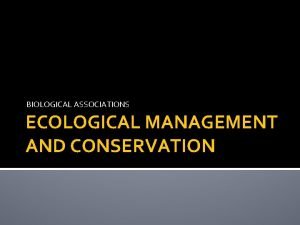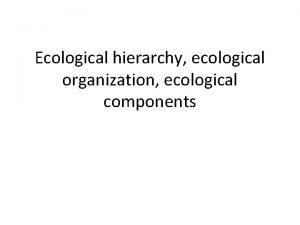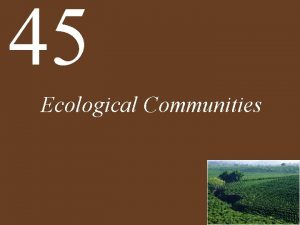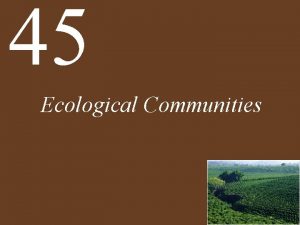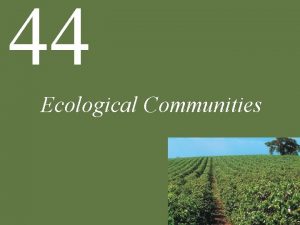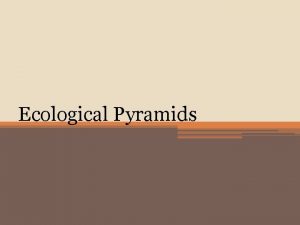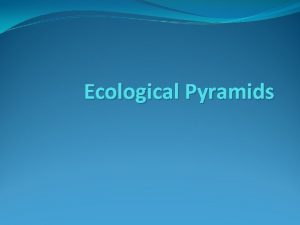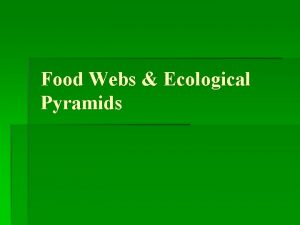Lesson 5 3 Ecological Communities The sun provides










- Slides: 10

Lesson 5. 3 Ecological Communities The sun provides the energy for almost all of the ecological communities and species interactions on Earth.

Lesson 5. 3 Ecological Communities Primary Producers (Autotrophs) • The ultimate source of energy is the Sun • Primary producers, or autotrophs, capture energy from the sun or from chemicals and store it in the bonds of sugars, making it available to the rest of the community • EX: plants, algae, or bacteria through photosynthesis. • Energy from chemicals is captured by some bacteria through chemosynthesis. Did You Know? Deep-sea vents, far from sunlight, support entire communities of fish, clams, and other sea animals, which depend on energy converted through chemosynthesis.

Lesson 5. 3 Ecological Communities Consumers (Heterotrophs) • Rely on other organisms for energy and nutrients • Cellular Respiration – The process by which organisms use oxygen to break bonds in sugar and release its energy through cellular respiration • Primary producers do this, too California Condor Did You Know? Scavengers, such as vultures and condors, are just large detritivores.

Lesson 5. 3 Ecological Communities Types of Consumers (Heterotrophs) • Herbivores: plant-eaters • Carnivores: meat-eaters • Omnivores: combination-eaters • Detritivores and decomposers: recycle nutrients within the ecosystem by breaking down nonliving organic matter • A detritivore consumes non-living organic matter, such as waste, while a decomposer breaks down nonliving matter into simpler parts that can be taken up by producers. California Condor Did You Know? Scavengers, such as vultures and condors, are just large detritivores.

Lesson 5. 3 Ecological Communities Energy in Communities • An organism’s rank in a feeding hierarchy is its trophic level. • Primary producers always occupy the first trophic level of any community. • There are typically only three or four tropic levels in any community. Pyramid of Energy

Lesson 5. 3 Ecological Communities Energy in Communities • In general, only about 10% of the energy available at any trophic level is passed to the next • Most of the rest is lost as heat to the environment. Pyramid of Energy

Lesson 5. 3 Ecological Communities Numbers and Biomass in Communities • A trophic level’s biomass is the mass of living tissue it contains. • In general, there are more organisms and greater biomass at lower trophic levels than at higher ones.

Lesson 5. 3 Ecological Communities Food Chains and Webs • Food chain: Linear series of feeding relationships (simple line) • Food web: Shows the overlapping and interconnected food chains present in a community (complex map)

Lesson 5. 3 Ecological Communities Keystone Species • Keystone species Species that have strong and/or wide-reaching effects on a community • Removal of a keystone species can significantly alter the structure of a community. • For example, sea otters • A Keystone Species

Think Visually – Food Chain 100% Primary Producer 10% Herbivore 1% Carnivore 0. 1% Decomposer

